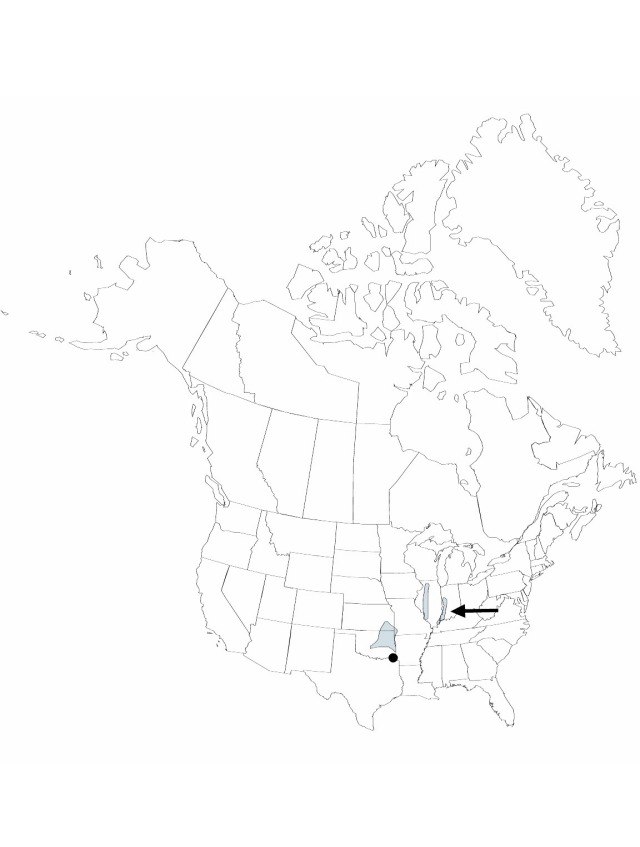Sagittaria ambigua
N. Amer. Sagittaria. 22, plate 17. 1894.
Herbs, perennial, to 90 cm; rhizomes absent; stolons present; corms present. Leaves emersed; petiole triangular, 15–54 cm; blade lanceolate to ovate, 5–20 × 1–10.5 cm. Inflorescences racemes, rarely panicles, of 2–11 whorls, emersed; bracts scarcely connate proximally, linear to lanceolate, 10–30 mm, delicate, not papillose; fruiting pedicels spreading to ascending, cylindric, 1.5–3.5 cm. Flowers to 23 mm diam.; sepals recurved, not enclosing flower or fruiting head; filaments linear, shorter than anthers, glabrous; pistillate pedicellate, without ring of stamens. Fruiting heads 0.8–1.2 cm diam; achenes cuneate-obovoid, abaxially keeled, 1.5–2.1 × 0.8–1.5 mm, beaked; faces not tuberculate, wings 0–1, ± entire, glands absent; beak lateral, horizontal or incurved, 0.1–0.2 mm.
Phenology: Flowering spring–summer (Apr–Sep).
Habitat: Pond and lake shores, shallow water, ditches, and damp areas
Elevation: 100–1000 m
Distribution

Ill., Ind., Kans., Mo., Okla.
Discussion
Of conservation concern.
Selected References
None.